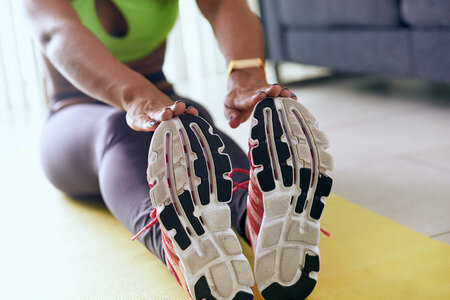5 Ways to Exercise Safely with Diabetes
It’s American Diabetes Month, and at Goldsmith Podiatry we are committed to helping our patients who have diabetes be proactive in managing their disease and protecting the health of their feet. That’s why we recommend regular checkups with our podiatrists, Dr. Howard Goldsmith and Dr. Rosanna Troia, for all diabetic patients. One way to help keep blood sugar levels where they should be is by exercising regularly. Being a diabetic, however, means you will need to take extra precautions. Below are five tips to ensure you are working out safely.
1. Get the green light. First step when starting a new fitness regimen is consulting with your physician. Diabetes can affect your heart, blood vessels, eyes, feet, and nervous system. Your doctor will know what restrictions to physical activity may be necessary depending on your specific conditions.
2. Choose the right shoes and socks. Wear the right shoes for the sport or fitness activity you are doing. Look for styles that have silica gel or air mid-soles for weight bearing exercise because they will reduce stress on your feet and joints. For socks, you want to pick ones that are made of material that reduces friction, so avoid toe seams and tight elastic. Your socks can also help keep your feet dry—a key factor in preventing fungal infections. Look for types that pull moisture away from your skin, such as CoolMax, acrylic or polypropylene. Ask the podiatrist for recommendations of shoes and socks that would be best for you.
3. Be prepared for emergencies. Always bring your cell phone when exercising in case you don’t feel well and need to call for help. Wear a medical identification bracelet or dog tag that tells you have diabetes in case of an emergency.
4. Bring supplies. A water bottle is essential when working out so that you can stay hydrated. It’s also important to have a source of carbohydrate with you so that you can test and treat a low if you feel one coming on.
5. Inspect your feet before and after activity. Look for redness, blisters, or signs of irritation to your feet. If you injure your foot or notice a sore, cut, or blister, contact our Upper West side office for an appointment as soon as possible by calling: (212) 877-1002.

